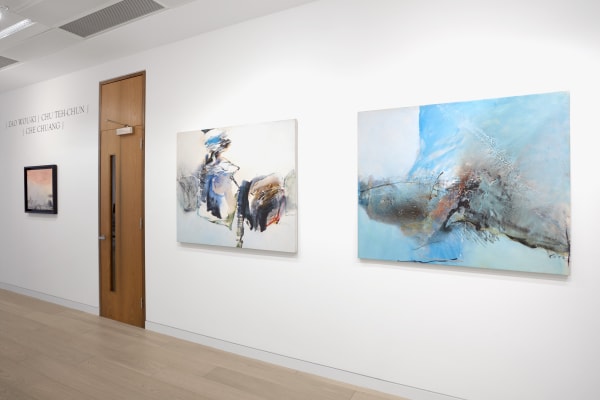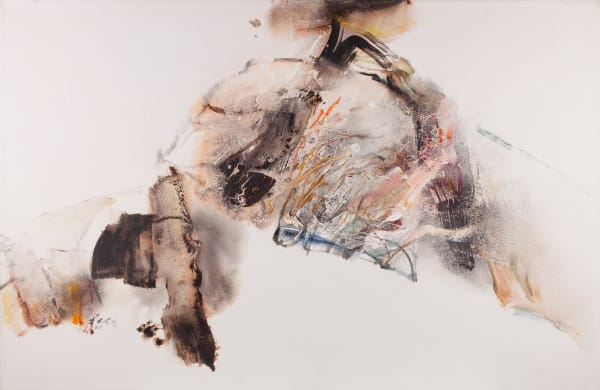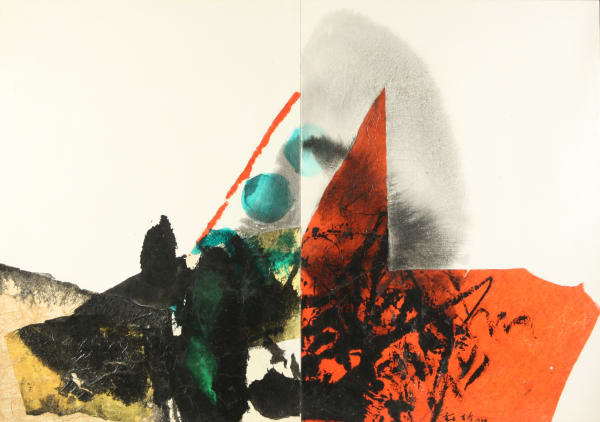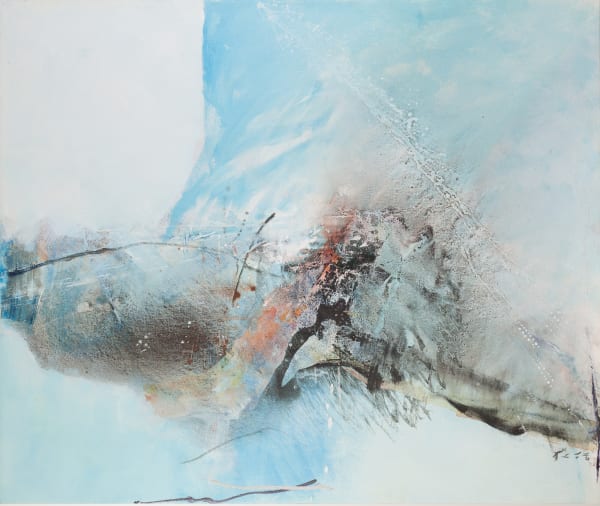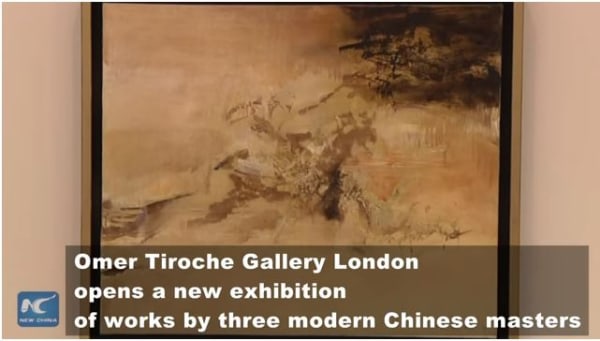Zao Wou-Ki | Chu Teh-Chun | Chuang Che
Omer Tiroche Gallery is pleased to announce the forthcoming exhibition of works by Zao Wou-Ki, Chu Teh-Chun, and Chuang Che. This show will be the first time that the relationship between these three artists has ever been explored within the same context. Each have been attributed as being pioneering figures in Modern Art that bridged the gap between the East and West, and by straddling the two cultures they infused their centuries old Chinese heritage with a new Western visual language, enabling Chinese Abstraction to flourish. The works in this exhibition span from 1960 – 2005 and illustrate the result of this cultural infusion as well as their own influences on one another.
Art in China during the 1950s and 1960s was fiercely traditional. Whilst the West were experimenting and developing different movements, the East were reproducing scenes from their ancient past. In addition, due to the social and political turmoil caused by the growing Communist party in Mainland China, many artists emigrated to seek new avenues and cultural exploration in other countries.
Zao Wou-Ki (b. 1920-2013) and Chu Teh-Chun (b. 1920-2014) both attended the National Academy of Art in Hangzhon in 1935. It was the first academy in China to focus on contemporary art, with a curriculum based on the Ecole de Paris. Zao and Chu, along with fellow classmate Wu Guanzhong, were dubbed the ‘Three Musketeers’ of Modern Chinese Art.
Chuang Che’s contact with Chu and Zao began in Taiwan. In 1948 Chuang had enrolled at the National Taiwan Normal University where Chu Teh-Chun had taken a teaching post. The faculty at the school were highly supportive of the avant-garde and encouraged their students to embrace and explore Western art movements. As a result, in 1958 Chuang Che became one of the founding members of the Fifth Moon Group. Their objective was to bring a fresh perspective to traditional Chinese painting whilst drawing on the international artistic climate of the 1950’s, a goal that all three artists shared in their work.
Taiwan in the 1950’s was under the protection of the US, who opened a cultural centre there. The library, filled with American books introduced them to their first glimpse of abstract art. This was a turning point for many young local artists. During this period, Chuang stumbled upon an advertisement for an exhibition Zao Wou-Ki was having in Tokyo. This was a pivotal moment for Chuang Che; Zao by this point had fully moved over into abstraction and Chuang was captivated by his work. He wrote to Zao immediately and their correspondence lasted many years.
Whilst Zao Wou-Ki moved to Paris in 1948 and Chu Teh-Chun followed in 1955, Chuang Che in 1966 won the J.D. Rockerfeller scholarship to travel to the US. Chuang ultimately moved to Ann Arbor, Michigan, in 1973 and later settled in New York in 1988. In 1968 he travelled to Paris for six months to visit his teacher Chu Teh-Chun and mentor Zao Wou-Ki. It was the first time he had met Zao in person. Despite their geographical distances, they maintained a strong link through their developing practices as they explored the marrying of abstraction, calligraphy and ink painting which resulted in major contributions to the exchange of ideas between the East and the West.
All three artists came to focus on abstract landscape paintings. Chu Teh-Chun’s move towards it came in a dramatic shift after he visited a Nicolas de Stael retrospective in Paris in 1956.
Traditionally landscapes are viewed as the most significant subject matter in Chinese painting; a central Chinese philosophy is that man and nature are in harmony. They believed that the grandeur and boldness of these ancient paintings had been lost and they wanted to restore and reinvent this tradition. In Zao Wou-Ki’s painting from 1970, he illustrates his interest in the revival of these works, as the eruptive abstract landscape is reflective of the scenes in the ancient Song Dynasty paintings. It is particularly from this period that the artists drew a great deal of their influence.
Similarly, the use of light is important in their work, most noticeably for Chu. After his visit to Amsterdam in 1969, where he encountered works by Rembrandt and other Old Masters, he began incorporating Chiaroscuro into his paintings as we see in Tourbillon, 2003. Chuang Che’s use of light is slightly different in that he predominately leaves his backgrounds white, which highlights his pastel colours and earthly tones creating an overall brightness, as shown in Landscape, 1977.
The artists’ shared theories, practices and influences helped them draw on all their source to create a new and original body of work. Making them collectively, as well as individually the leading figures in Chinese Abstraction.
-
 Chuang CheAbstract Landscape, 1984Oil on canvas125 x 190.5 cm.
Chuang CheAbstract Landscape, 1984Oil on canvas125 x 190.5 cm.
49 3/16 x 75 in.€ 65,000.00 -
 Chuang CheUntitled (diptych), 1960Oil and collage on canvas83 x 121.5 cm.
Chuang CheUntitled (diptych), 1960Oil and collage on canvas83 x 121.5 cm.
32 11/16 x 47 13/16 in.€ 30,000.00 -
 Chuang CheUntitled, 1982Acrylic on canvas106.7 x 127 cm.
Chuang CheUntitled, 1982Acrylic on canvas106.7 x 127 cm.
42 x 50 in.€ 40,000.00 -
 Chu Teh-ChunComposition No. 206, 1964Gouache on paper38 x 53 cm.
Chu Teh-ChunComposition No. 206, 1964Gouache on paper38 x 53 cm.
14 15/16 x 20 ⅞ in.








